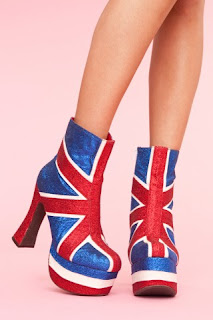"The evolution of culture is synonymous with the removal of ornament from objects of daily use." - Adolf Loos, 1908
Adolf Loos's thoughts on modern design were similar to those of other design reformists, talked about in previous blog assignment. He believed that ornamentation of objects was seductive, a way of hiding bad construction underneath, distracting, and takes away from the user experience. He also believed that ornamentation and decoration of objects in his time period, early 18th Century, held back the cultural development of civilization. In his essay, "Ornament and Crime", he says "Ornament is not merely produced by criminals, it commits a crime itself by damaging national economy and therefore its cultural development." Taking into account the culture and values of this time period, I somewhat agree with Adolf Loos. After reading his essay, I agree with his thoughts on society at the time, wasting their money and damaging the economy on expensive embellished objects when modern and simple objects were cheaper, as well as overworking craftsmen when manufacturing could take less time without the embellishments. Loos states in "Ornament and Crime", "Decorated plates are expensive, while white crockery, which is pleasing to the modern individual, is cheap. Whilst one person saves money, the other becomes insolvent. This happens to entire nations."
Saying this, I do not share the same passion as him for this point, when he explains that those who endorse ornament are "criminals" I cannot agree. With his point, "If I want to eat a piece of gingerbread I will choose one that is completely plain and not a piece which represents a baby in the arms of a horse rider, a piece that is covered over and over with decoration." I disagree. It feel as though ornamentation and decoration can increase your experience with the design. Ornamentation and what the object looks like can aid how inviting it is to interact with and use. In modern times, ornamentation of it can add pleasure to the experience, through visual stimulation and engagement, and has no relation to the culture of society or someones education. I believe an object will always be more inviting and exciting to use if it is aesthetically pleasing.
I can understand how in his time period, the past embellishment seemed unnecessary, expensive and a waste of resources and man power but bringing his thoughts into the modern times that I live in, I can argue that sometimes a little ornamentation can add to an experience, and those who use it and like it are not "criminals". I do not believe the evolution of culture was effected to the extent that Adolf Loos describes in, "Ornament and Crime" with the removal of ornamentation. Over 100 years on from when this essay was written, ornamentation and aesthetics are still an important part of design, as designers are forever pushing the boundaries, with utility and aesthetics of designs. Examples of this can be seen in a lot of footwear today. I have chosen an image of some high-heels that are more like works of art! Jeffrey Campbell is a well known fashion footwear designer and has designed these "Spicy Platform Boots". They are covered in ornamentation with the design of the union jack embellished over the shoes in glitter. The ornamentation does not relate to the utility of the shoes, but is more for the aesthetics of the design. This shows that ornamentation and aesthetics of design are still important and even with ornamentation, culture and society has evolved successfully into modern times.
 |
| Spicy Platform Boot, Jeffrey Campbell Retrieved from: http://www.shopnastygal.com/products/new/clothing/shoes/Spicy-Platform-Boot.html |
No comments:
Post a Comment